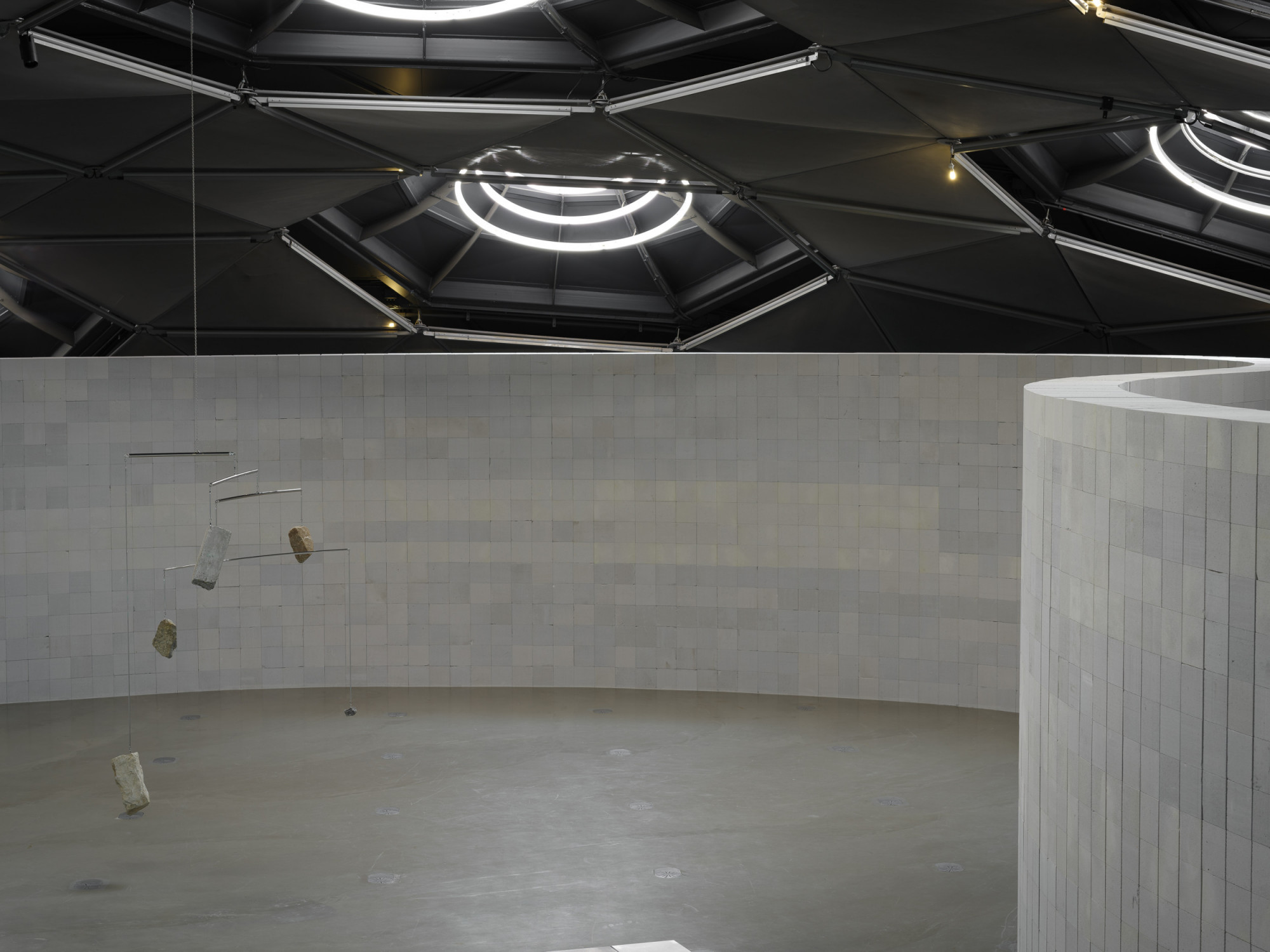
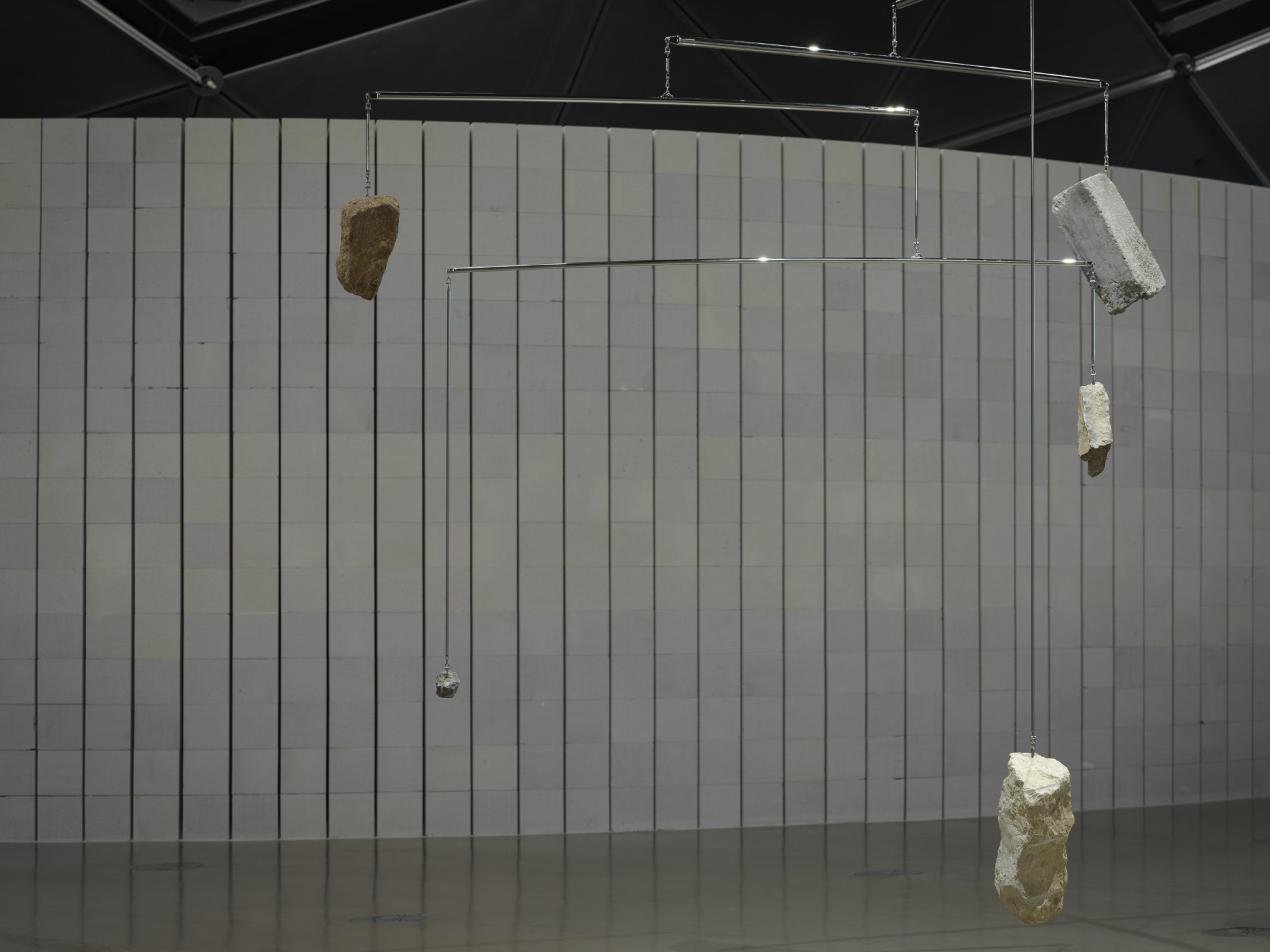
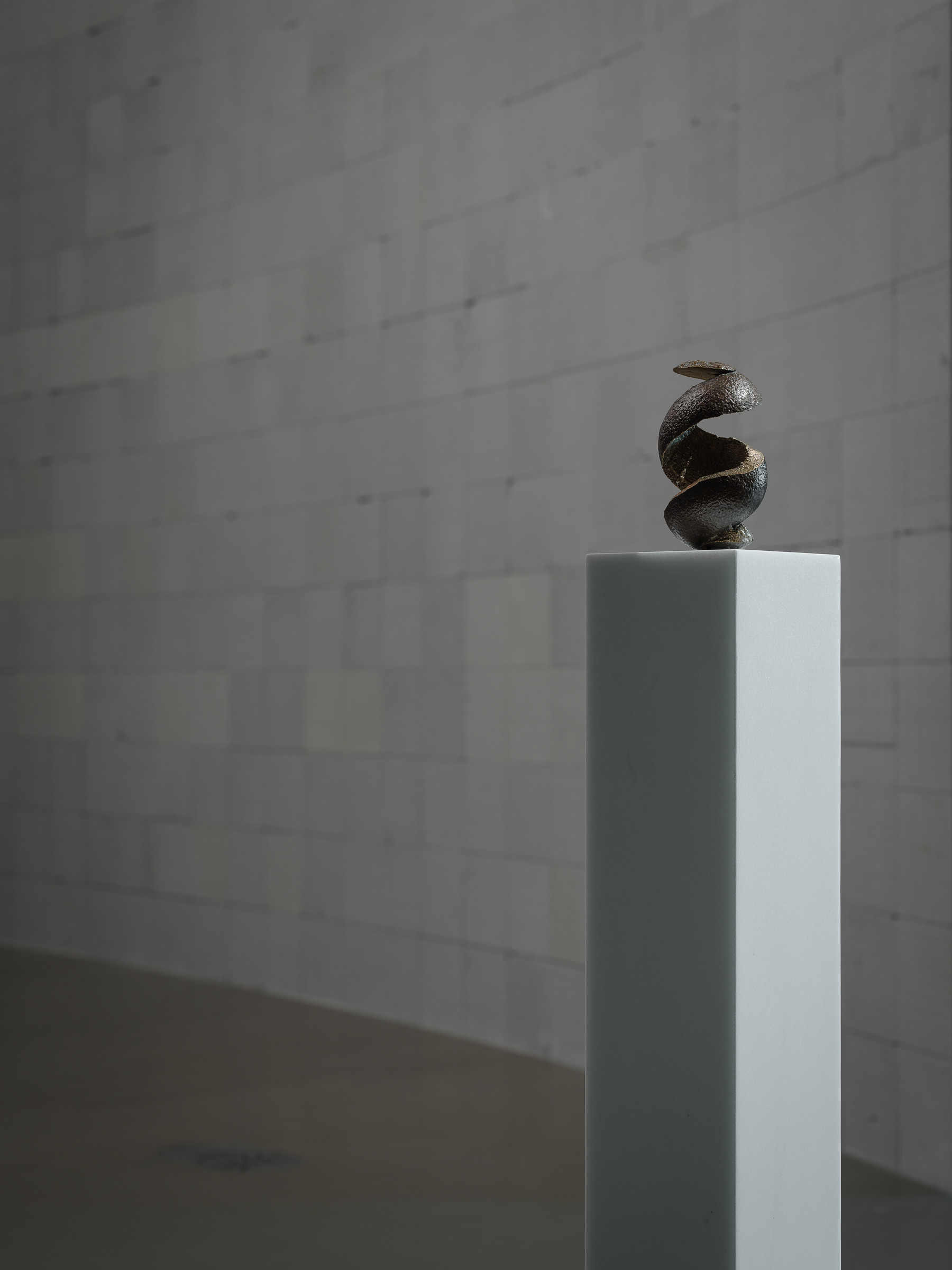
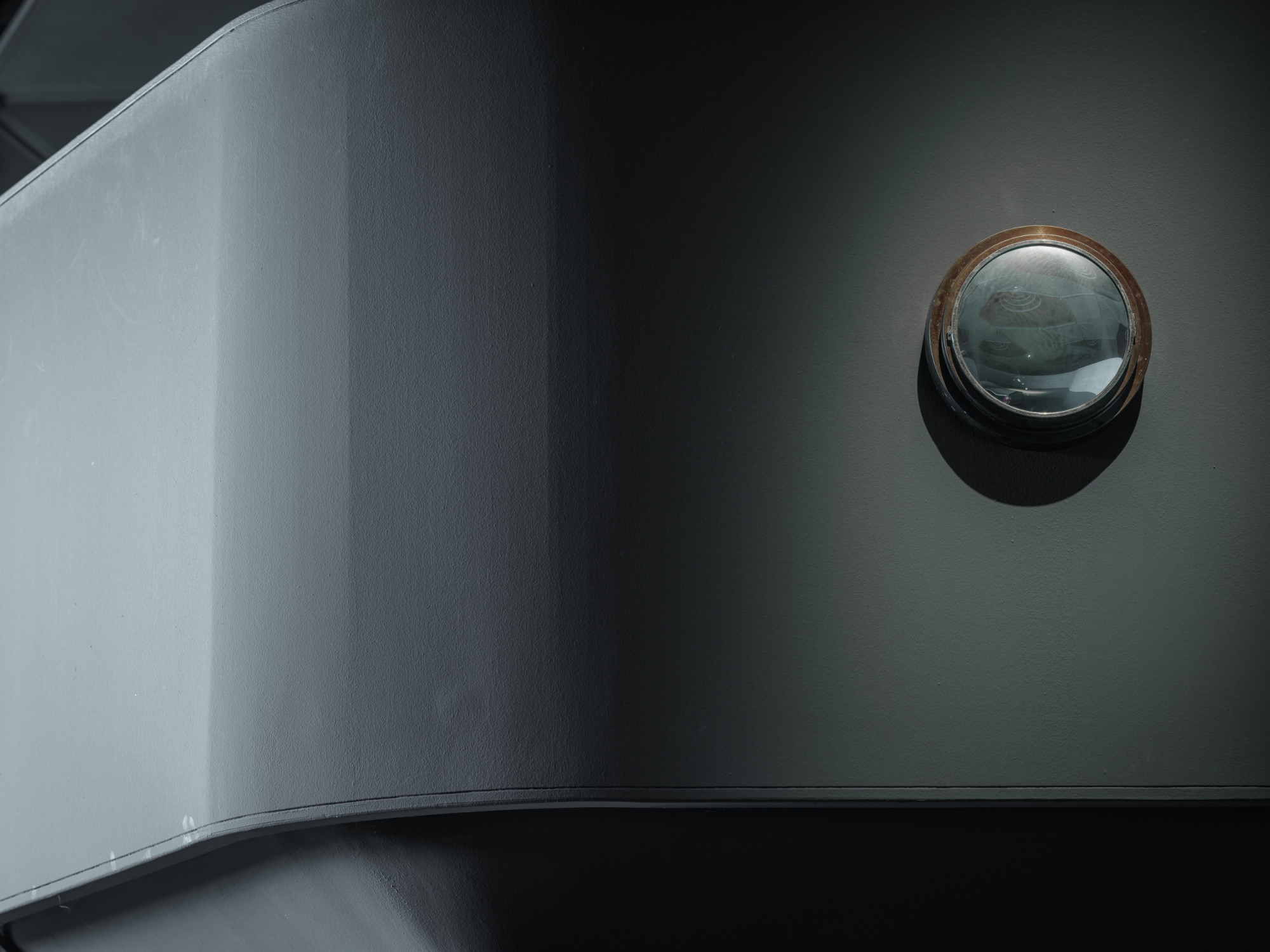
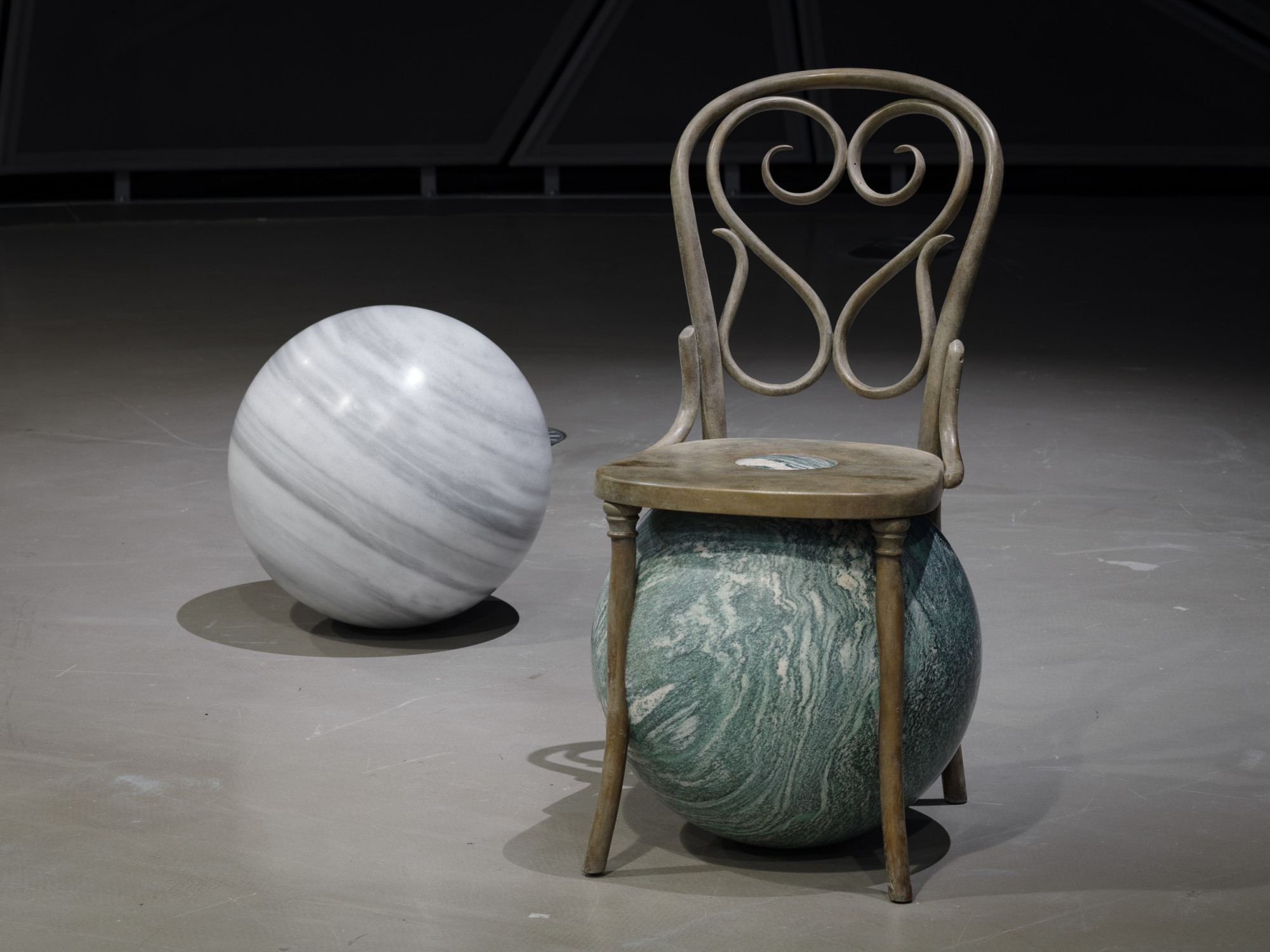
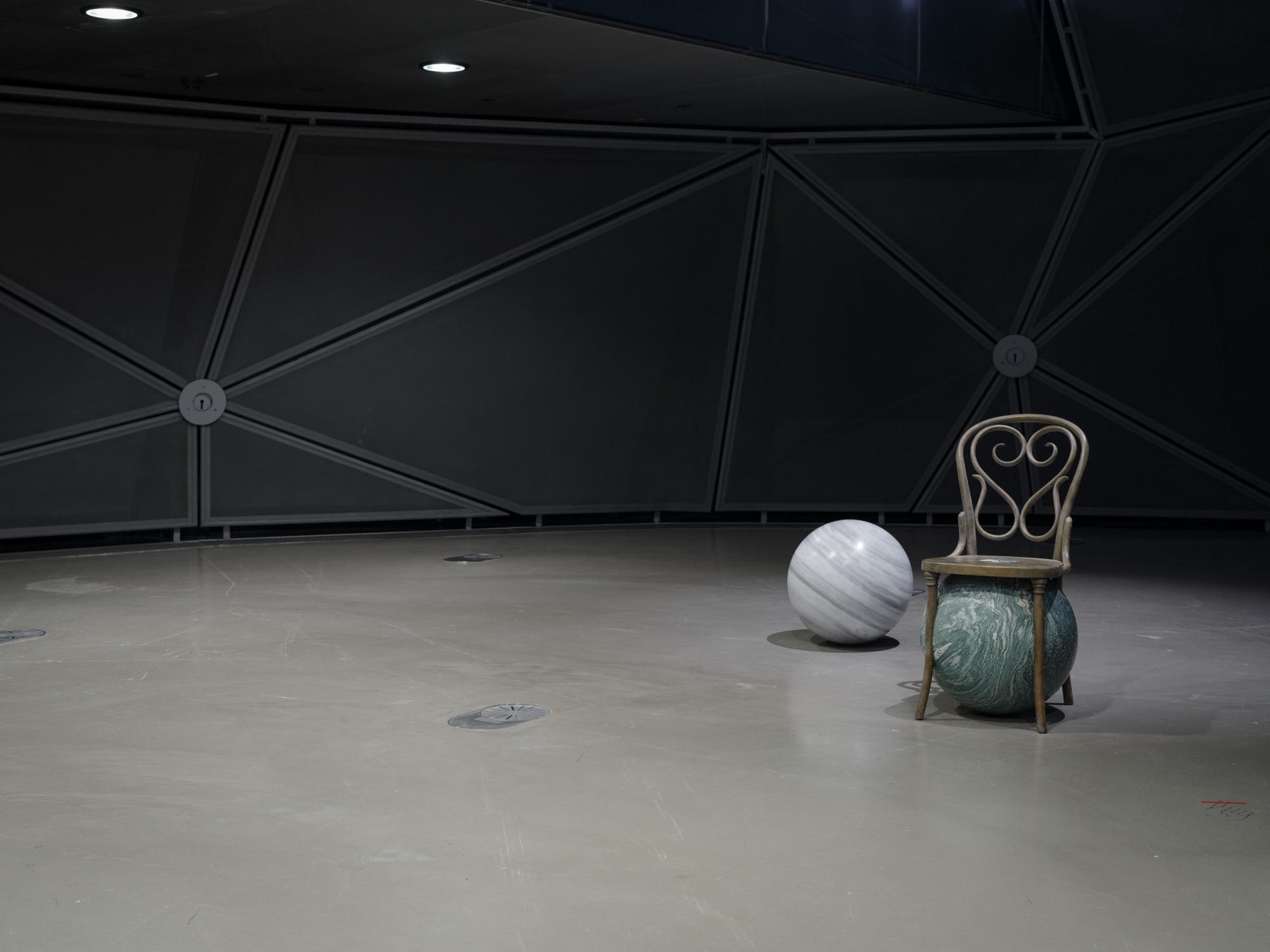
The third exhibition intervention in the show Sol LeWitt’s Wall. Performed was created by Alicja Kwade. Kwade’s work raises questions about the relativity of matter and knowledge, entering into a dialogue with the huge curved wall.
In "Siège du Monde II", stones that are millions of years old are cut and polished into precise spheres and become the image of the ‘Blue Marble’, the Earth seen from space. If, however, a chair sits on top of the sphere, a chair like at the kitchen table at home, and if this is made of bronze, it suggests the weight of the culture of humankind pressing down on the planet, and who dares to sit on it. Kwade’s sculptures of stone and bronze, or a mirrored clock, are like interpretative orders of scientific experi ments. What is time without its humanmade structure?
Kwade’s examination of the enigmatic nature of the world uses materialised parables to address the universe and notions of human existence. In this way it becomes a fitting counterpart on the interior side of the humanbuilt wall, a sculp tural structure that traverses the museum space of the Kunsthaus in an almost semicircular shape. Nothing is what it seems to be.
In the mobile "Superheavy Skies", heavy stones are transformed into a light, floating planetary constellation that rotates. Inside Sol LeWitt’s sheltered interior space of lightweight concrete, the work elements appear as friendly messengers from another dimension of time. The laws of physics and the haptic and visual experience of heaviness and gravity converge in a poetic contradiction. In both LeWitt’s and Kwade’s works, seeing takes time – view ing in space allows for thinking and remembering. We might also catch our selves giving weight (!) to what we think we recognise.
@ Images N. Lackner / Kunsthaus Graz